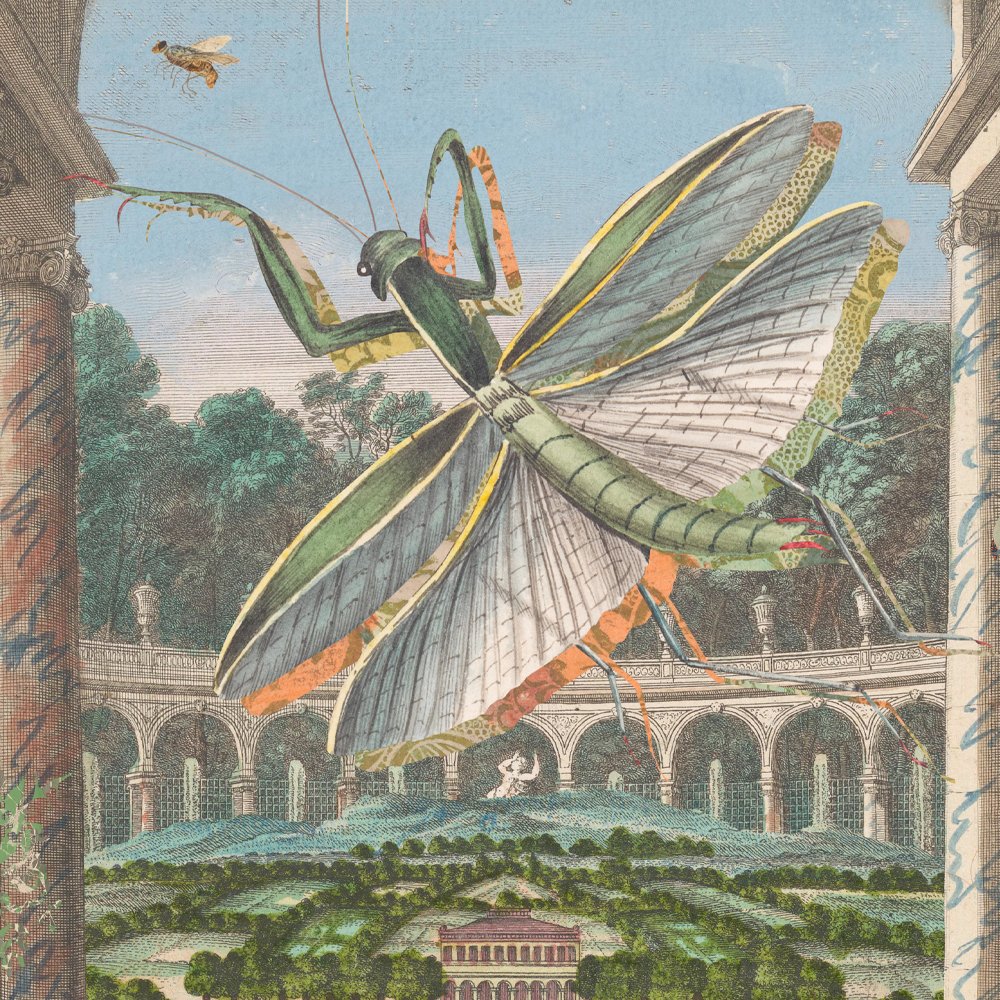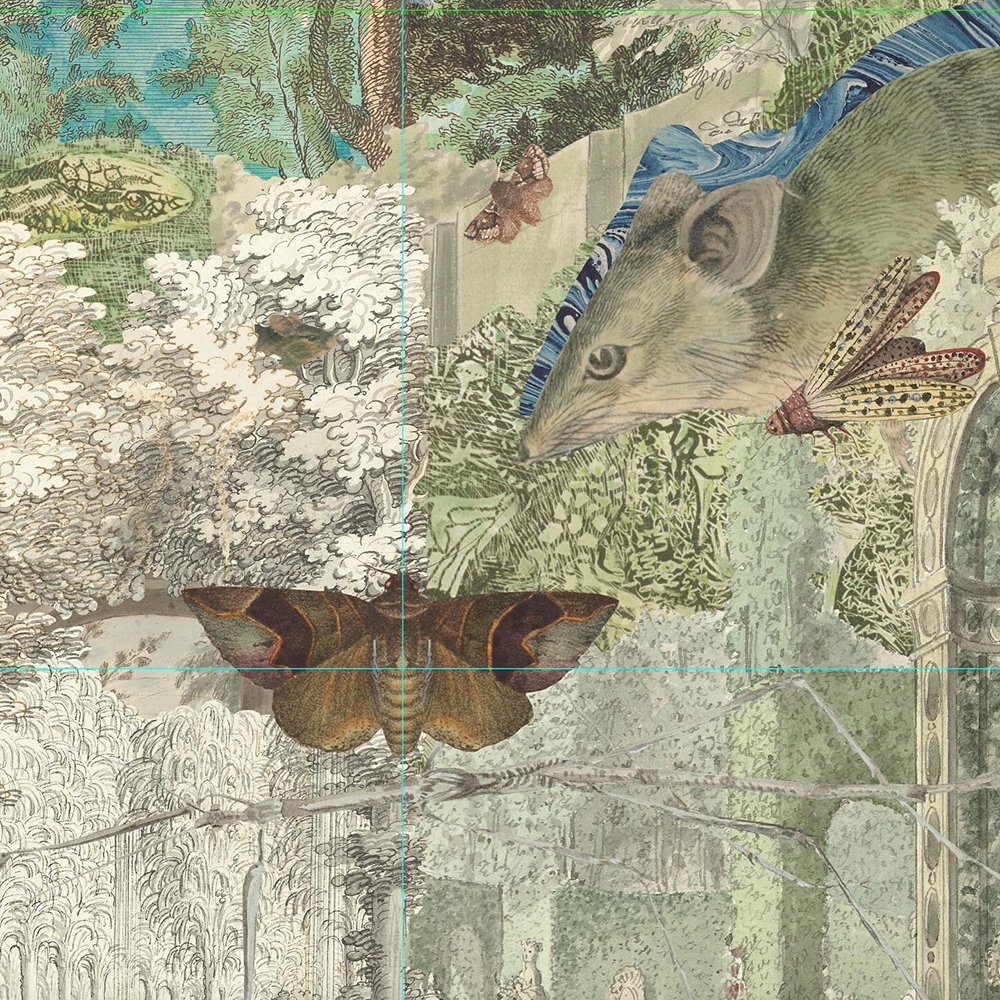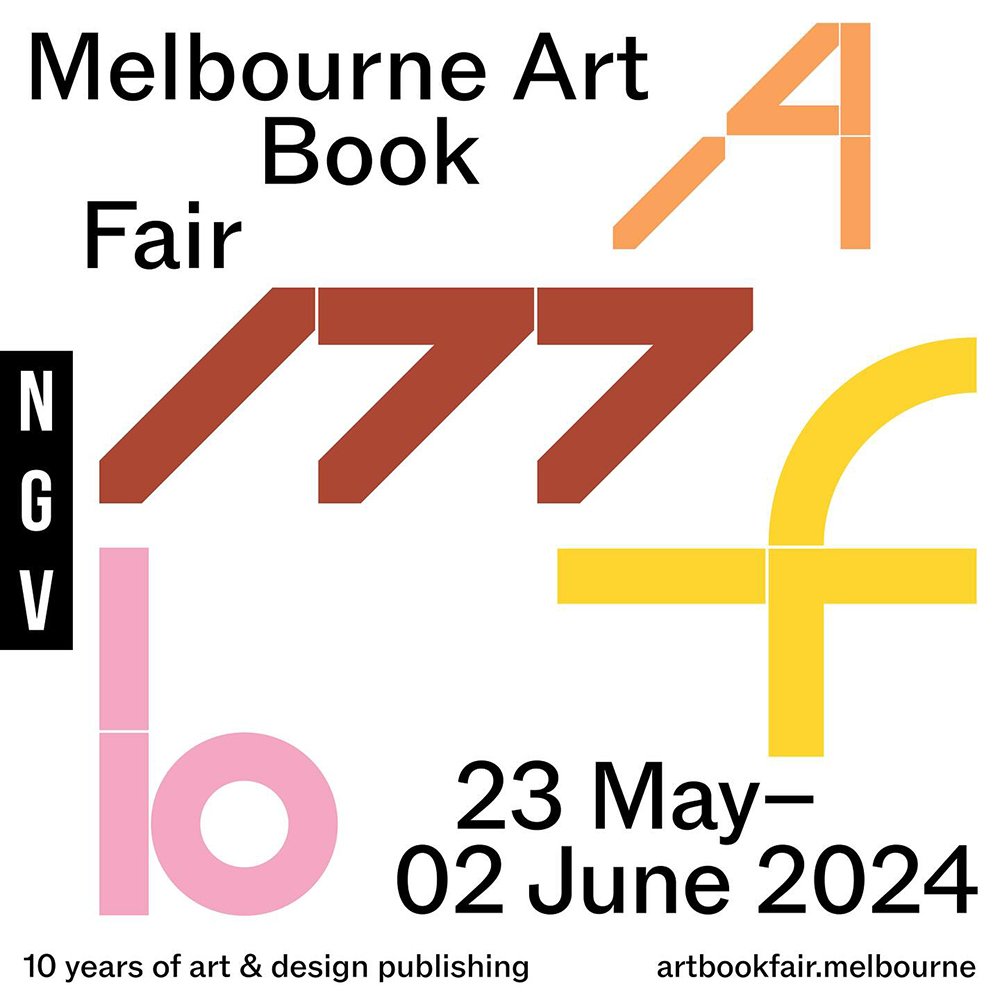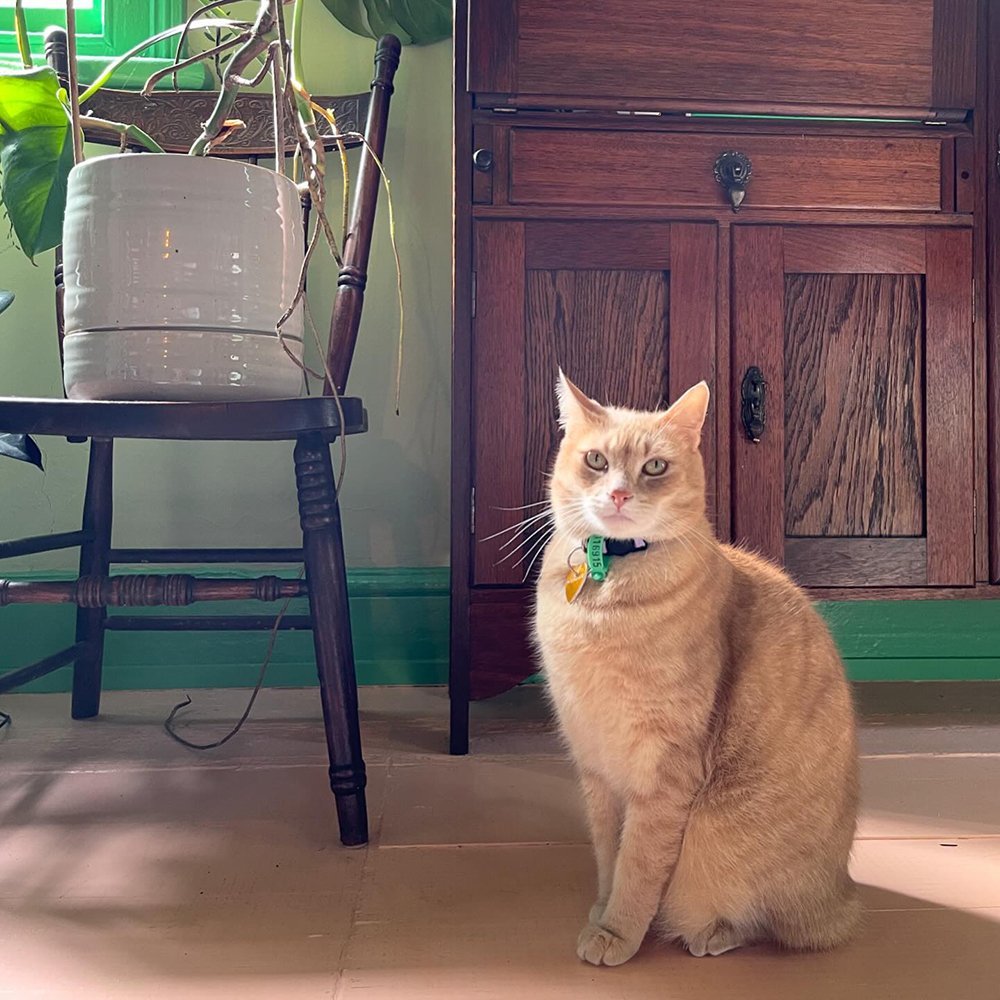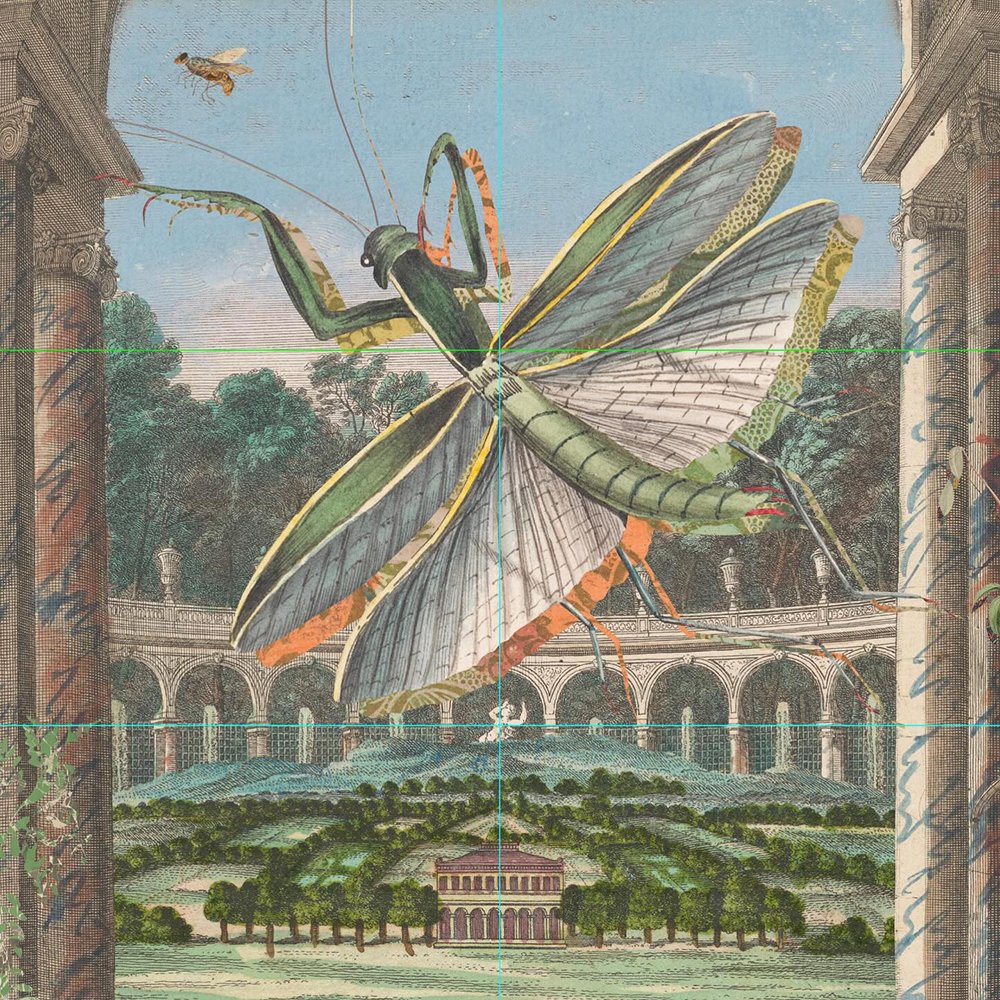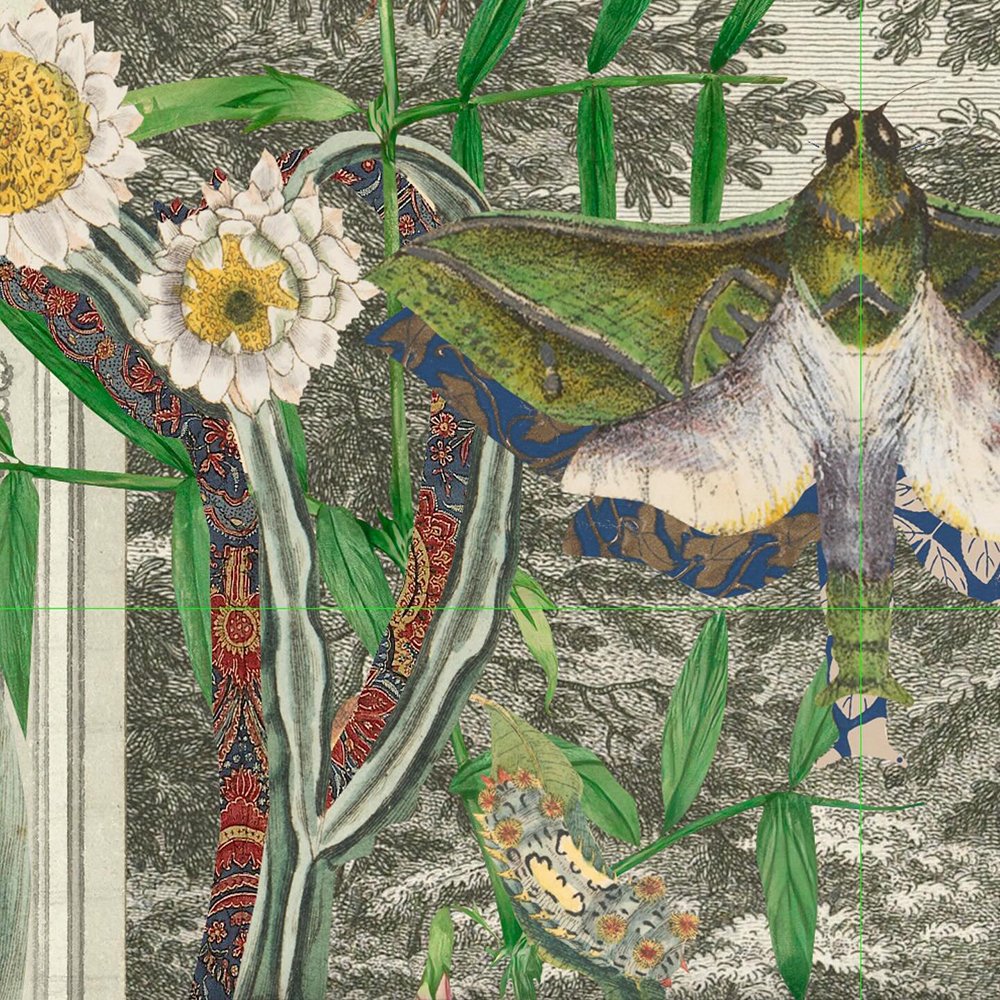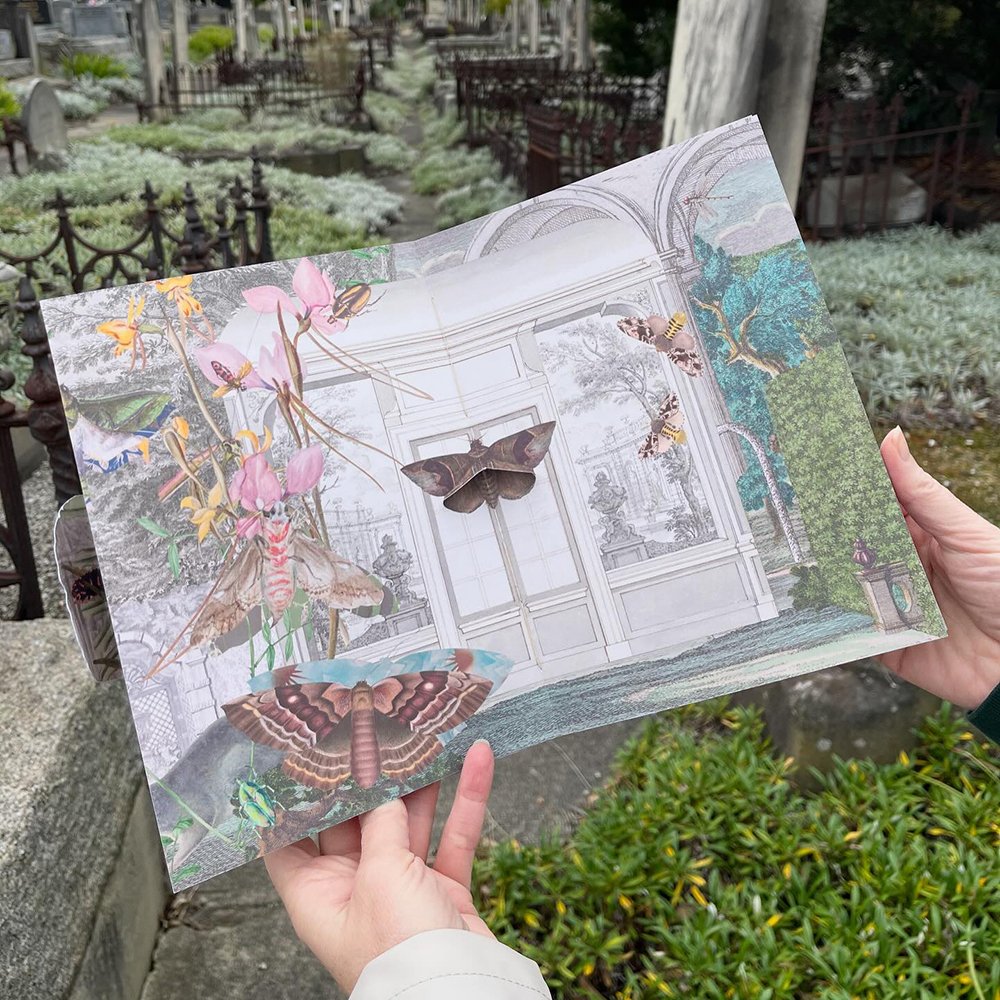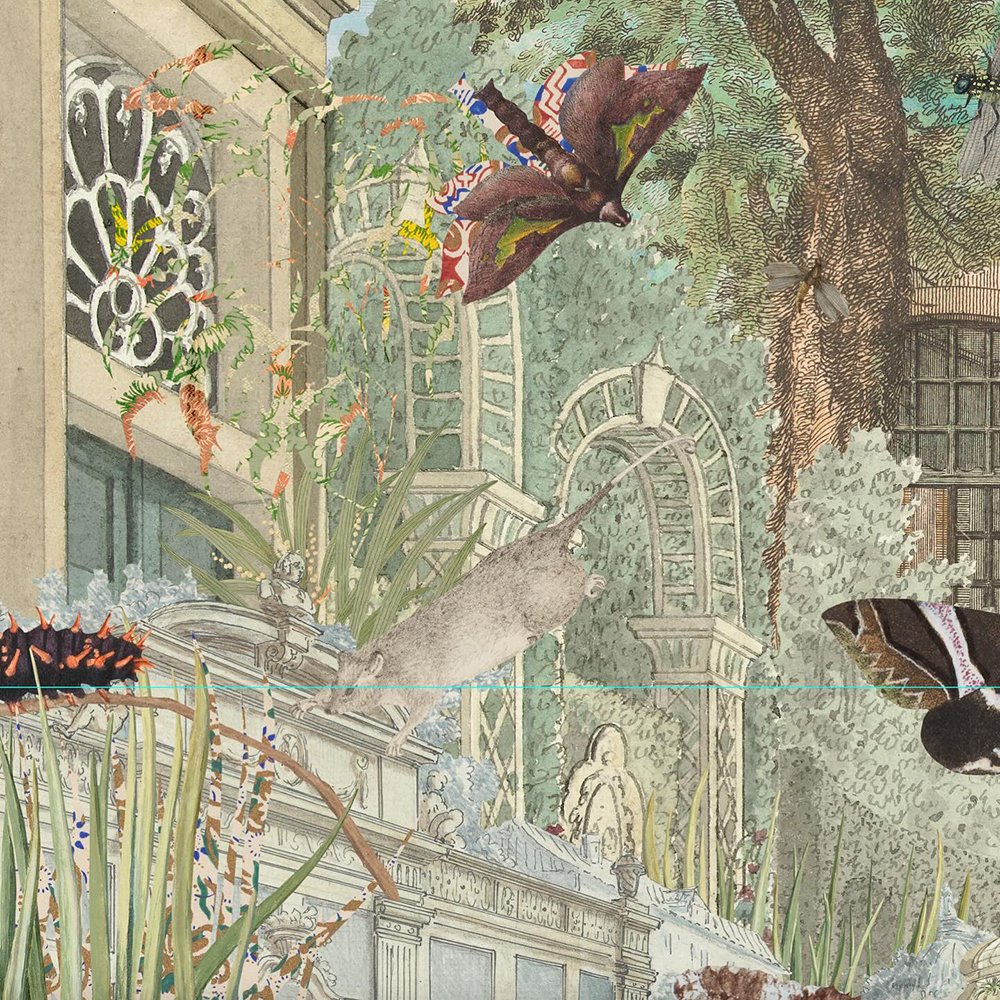BILATERAL SYMMETRY
This invitation extended is perhaps more, under the leaf, as you crouch by a potted plant and behold the wonderful world of insects, thrumming.
Gracia Haby & Louise Jennison
Bilateral Symmetry
2024
24 page barn fold, pamphlet stitched, artists’ book, with pop up components and narrative (by Gracia Haby), Indigo Digital CMYK on 160gsm ecoStar + 100% Recycled Uncoated, with cover, Indigo Digital CMYK on 300gsm ecoStar + 100% Recycled Uncoated
Printed by Bambra
Bound by Louise Jennison
Edition of 100
Bilateral Symmetry will be released at this year’s tenth Melbourne Art Book Fair, NGV International (Thursday 23rd of May – Sunday 26th of May, 2024).
Until then, read on.
●
A miniature lock and key, forged of iron, steel, and brass, gave rise to the flea circus boom, or so the tale goes, when Mark Scalliot, a 16th Century smithy, fashioned to his lock and key, a fine chain of 43 links which he in turn fastened “about the neck of a flea, which drew them all with ease. All these together, lock and key, chain and flea, weighed only one grain and a half.” Created “for exhibition of trial and skill”, it coincidentally highlighted the finesse of a single flea (Pulex irritans), and so we have orchestrated, in our own exhibition of skill with scissors and files, a theatre for insects. Though this time around, our fellow exhibitors, the insects, all, momentarily pressed within our artists’ book, Bilateral symmetry, are untethered and unglued upon the unfolding paper stage. And all weighing no more, it is estimated, than 1662 grains of gold, once bound in book form.
Here, you’ll find no tiny carriages in a show of horological prowess. Not for them an ivory “landau with figures of six horses attached to it — a coachman on the box, a dog between his legs, four persons inside, two footmen behind, and a postillion on the fore horse, all of which were drawn by a single flea[i]”, like that of watchmaker Sobieski Boverick, sparked some two centuries after Scalliot. The handbill, were there one to read, could not, would not, boast the following: “Come and see the LIVELY FLEAS… Fight a Dual, with Swords, Walk the Tight Rope a la [acrobat Charles] Blondin” and when harnessed like horses draw and drive “Mail Vans, Funeral Cars, Cabriolets” in Professor Kontili’s “Wonderful Roumanian Flea Circus… patronised by Royalty, Nobility, & Clergy”[ii] alike. An advertisement to Signor Bertolotto’s “Extraordinary Exhibition of Industrious Fleas from Regent Street, London” in 1834[iii], where admission was priced at one shilling per curious, with admittance “from 10 till Dusk”, an equal ill fit.
Less under the microscope, like Robert Hooke’s unveiling of the smallest writ resplendent and large[iv], with fleas et al. on a scale “as if they were lions or elephants seen with the naked eye”, in Micrographia, this invitation extended is perhaps more, under the leaf, as you crouch by a potted plant and behold the wonderful world of insects, thrumming. Not all of them fleas, in fact, after all that, possibly only one. Not all of them fully transformed, from egg to larvae to pupa to adult, either. But all of them in a state of doing their own thing. When hearing organs are everywhere, from “a place on wings of lace / To make an ear in haste”[v], to crickets and katydids storing their tympanal organs within their kneecaps; while the mosquito parks theirs with their antennae, and the scarab beetles, upon their necks; what need is there for the four-wheeled carriage.
[i] Ernest B. Furgurson, ‘A Speck of Showmanship: Is that Pulic irritans pulling that carriage, or is someone just pulling our leg?’, The American Scholar, Volume 80, No. 3 (2011), p. 92.
[ii] Publicity for Professor's Kontili's Flea Circus, which involves fleas performing ballet, fighting a duel, walking the tightrope and drawing carriages, circa 1900 (Photo by Hulton Archive/Getty Images).
[iii] In Louis Bertolotto’s The History of the Flea with Notes and Observations, published in the very same year, he introduces the flea as though “apterous, walk but a little, but leap to a height equal to two hundred times that of their own body”. He also praises their “large and beautiful” eyes.
[iv] Robert Hooke uses the terms “strength”, “unlike any other”, and “beauty” to describe the flea, and “all over adorned with a curiously polish’d suit of sable Armour, neatly joined”. Robert Hooke, Micrographia (London: Royal Society, 1665), p. 210.
[v] From Zoologist David Pye’s ‘B. Sequel “+36 years” (2004)’, on the ultrasonic sensitivity of the tympanal receptor in the Green Lacewing (Chrysopa carnea), to ‘Poem by David Pye: On the Variety of Hearing Organs in Insects, A. From Nature (1968) 218:797’, Microscopy Research and Technique, Volume 63, Issue 6 (2005), pp. 313–314.
﹏
RELATED LINK,
NGV MELBOURNE ART BOOK FAIR 2024
RELATED POSTS,
TAKING FORM
TINY BUT WILD
WILDLINGS
